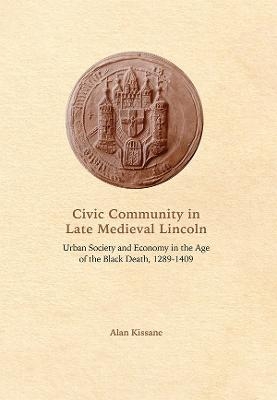
Civic Community in Late Medieval Lincoln
Urban Society and Economy in the Age of the Black Death, 1289-1409
Seiten
2017
The Boydell Press (Verlag)
978-1-78327-163-4 (ISBN)
The Boydell Press (Verlag)
978-1-78327-163-4 (ISBN)
An examination of the community of a major late medieval town: its economy, its customs, and its relationship with the Crown.
The later middle ages saw provincial towns and their civic community contending with a number of economic, social and religious problems - including famine and the plague. This book, using Lincoln - then a significant urban centre- as a case study, investigates how such a community dealt with these issues, looking in particular at the links between town and central government, and how they influenced local customs and practices. The author then argues, with an assessment of industry, trade and civic finance, that towns such as Lincoln were often well placed to react to changes in the economy, by actively forging closer links with the crown both as suppliers of goods and servicesand as financiers. The book goes on to explore the foundations of civic government and the emergence of local guilds and chantries, showing that each reflected broader trends in local civic culture, being influenced in only a minor way by the Black Death, an event traditionally seen as a major turning point in late medieval urban history.
Alan Kissane gained his PhD from the University of Nottingham.
The later middle ages saw provincial towns and their civic community contending with a number of economic, social and religious problems - including famine and the plague. This book, using Lincoln - then a significant urban centre- as a case study, investigates how such a community dealt with these issues, looking in particular at the links between town and central government, and how they influenced local customs and practices. The author then argues, with an assessment of industry, trade and civic finance, that towns such as Lincoln were often well placed to react to changes in the economy, by actively forging closer links with the crown both as suppliers of goods and servicesand as financiers. The book goes on to explore the foundations of civic government and the emergence of local guilds and chantries, showing that each reflected broader trends in local civic culture, being influenced in only a minor way by the Black Death, an event traditionally seen as a major turning point in late medieval urban history.
Alan Kissane gained his PhD from the University of Nottingham.
Introduction
Urban Foundations: Occupational Structure
Lincoln as Entrepôt: Tolls, Trade and Credit
The Crown and the Fee Farm
The Growth of Civic Government
Fraternity, Orthodoxy and Communal Cooperation
Chantry Founders, Commemoration and the Rental Market
Conclusion
Appendix 1: Occupational Sources and Data
Appendix 2: Lincoln Civic Officials, 1289-1409
Appendix 3: Lincoln Members of Parliament, c.1290-1410
Appendix 4: The Fraternal Year
Appendix 5: Perpetual Chantry Foundations
Bibliography
| Erscheinungsdatum | 10.01.2017 |
|---|---|
| Zusatzinfo | 18 line illus. |
| Verlagsort | Woodbridge |
| Sprache | englisch |
| Maße | 156 x 234 mm |
| Gewicht | 1 g |
| Themenwelt | Geschichte ► Allgemeine Geschichte ► Mittelalter |
| Geisteswissenschaften ► Geschichte ► Regional- / Ländergeschichte | |
| ISBN-10 | 1-78327-163-9 / 1783271639 |
| ISBN-13 | 978-1-78327-163-4 / 9781783271634 |
| Zustand | Neuware |
| Haben Sie eine Frage zum Produkt? |
Mehr entdecken
aus dem Bereich
aus dem Bereich
eine neue Geschichte des Mittelalters
Buch | Hardcover (2023)
C.H.Beck (Verlag)
CHF 53,20


